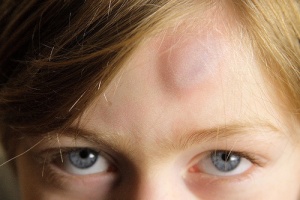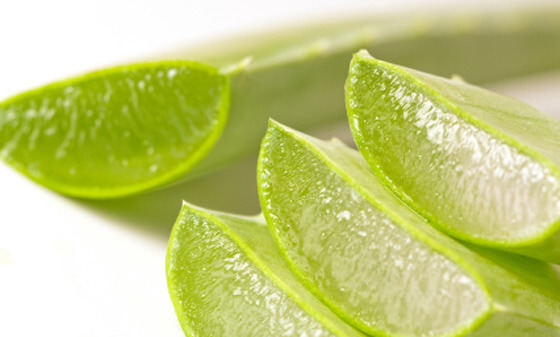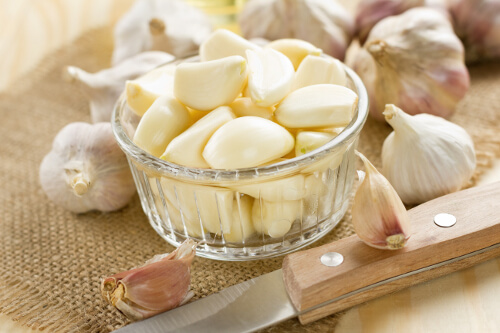10 Natural Remedies for Treating Bruises

Bruises, also known as hematomas, form when blood accumulates under the surface of your skin. They usually appear after an injury or contusion somewhere on the body.
Everyone has had a bruise at some point or another, so we all know how painful and annoying they can be.
That’s why we want to share these 10 natural remedies for treating bruises that are simple, effective and safe.
Ten of the Best Natural Remedies for Treating Bruises
1. Arnica Root
Arnica is one of the most effective and popular natural remedies for treating bruises and can effectively complement anti-inflammatory agents and painkillers.
This is because it’s high in gallic, caffeic, and chlorogenic acids, as well as helenalin and dihydrohelenalin.
2. Ice

Another popular natural remedy for treating bruises and bumps is ice. In fact, it’s been used for a long time.
Ice is effective because the cold causes blood vessels under the surface to contract, thus reducing inflammation. It also numbs the affected area and helps prevent the bruising from worsening.
You might like:
7 Benefits of Applying Ice to Your Skin
It’s important to apply an ice compress as soon as possible after an impact.
3. Salt
Salt is a great natural choice for fighting bruises.
Apply a little bit of salt to the affected area, and it can help absorb the lymphatic fluid that builds up beneath your skin. This can help reduce both pain and inflammation.
4. Onions
Onions can be a great option for helping to treat bruises. So, if you or someone you know gets a bruise, apply a layer of onion over the affected area.
Alliinase, the same compound that makes your eyes water when you’re slicing this vegetable, can also help stimulate the flow of lymphatic fluid and prevent blood from pooling beneath the skin.
You need to apply onions on the bruise as quickly as possible after the injury.
5. Apple Cider Vinegar
Pour a bit of apple cider vinegar onto some gauze and apply it to the bruise, massaging gently.
This could help stimulate circulation near the surface of the skin, causing the blood stored beneath to dissipate.
6. Aloe Vera

It’s used for all kinds of bumps and injuries, and especially burns. This is all thanks to the acibar that aloe vera contains.
You might like:
5 Big Benefits that Aloe Vera Gel Boasts for Your Skin
Applying it to the bruised area could help keep it from turning purple. If you chill the gel beforehand, it can also reduce pain and of course, inflammation.
7. Parsley
To naturally treat a bruise, cut up a few sprigs of parsley and apply them directly to the affected area.
Parsley has analgesic and anti-inflammatory properties that could help ease the pain. It’s also used for reducing swelling of the joints.
8. Witch Hazel
Witch hazel is a very popular plant in Japan and China.
It contains properties that may reduce inflammation and relieve pain following a stroke.
For treating bruises, however, make a tea using witch hazel plant leaves and apply the liquid to the affected area using a cloth moistened with the tea.
9. Garlic

Garlic isn’t just wonderful for your body when eat it. Rather, it’s also an excellent natural remedy for treating bruises.
Because it’s a powerful antioxidant, you can apply fresh garlic juice to the bruise and this could help promote new tissue growth.
10. Potatoes
Potatoes contain catalase, which may promote healthy cellular growth and reduce pain and inflammation.
To use potatoes as a natural remedy for treating bruises, place a small slice of potato over the affected area and leave it on for a few minutes.
All cited sources were thoroughly reviewed by our team to ensure their quality, reliability, currency, and validity. The bibliography of this article was considered reliable and of academic or scientific accuracy.
- Langlois, N. E. I., & Gresham, G. A. (1991). The ageing of bruises: A review and study of the colour changes with time. Forensic Science International. https://doi.org/10.1016/0379-0738(91)90154-B
- Zucker, L. (2008). Arnica. In Complementary Therapies for Physical Therapy (pp. 75–83). Elsevier Inc. https://doi.org/10.1016/B978-072160111-3.50012-9
- Ho, S. S. W., Coel, M. N., Kagawa, R., & Richardson, A. B. (1994). The Effects of Ice on Blood Flow and Bone Metabolism in Knees. The American Journal of Sports Medicine, 22(4), 537–540. https://doi.org/10.1177/036354659402200417
- Bayan, L., Koulivand, P. H., & Gorji, A. (2014). Garlic: a review of potential therapeutic effects. Avicenna Journal of Phytomedicine, 4(1), 1–14. Retrieved from http://www.ncbi.nlm.nih.gov/pubmed/25050296 http://www.pubmedcentral.nih.gov/articlerender.fcgi?artid=PMC4103721
- Griffiths, G., Trueman, L., Crowther, T., Thomas, B., & Smith, B. (2002, November). Onions – A global benefit to health. Phytotherapy Research. https://doi.org/10.1002/ptr.1222
- Budak, N. H., Aykin, E., Seydim, A. C., Greene, A. K., & Guzel-Seydim, Z. B. (2014). Functional Properties of Vinegar. Journal of Food Science, 79(5). https://doi.org/10.1111/1750-3841.12434
- Klein, A. D., & Penneys, N. S. (1988). Aloe vera. Journal of the American Academy of Dermatology, 18(4), 714–720. https://doi.org/10.1016/S0190-9622(88)70095-X
- Korting, H. C., Schäfer-Korting, M., Hart, H., Laux, P., & Schmid, M. (1993). Anti-inflammatory activity of hamamelis distillate applied topically to the skin – Influence of vehicle and dose. European Journal of Clinical Pharmacology, 44(4), 315–318. https://doi.org/10.1007/BF00316465
- de Sousa Barros, A., de Morais, S. M., Ferreira, P. A. T., Vieira, Í. G. P., Craveiro, A. A., dos Santos Fontenelle, R. O., … de Sousa, H. A. (2015). Chemical composition and functional properties of essential oils from Mentha species. Industrial Crops and Products, 76, 557–564. https://doi.org/10.1016/j.indcrop.2015.07.004
This text is provided for informational purposes only and does not replace consultation with a professional. If in doubt, consult your specialist.








